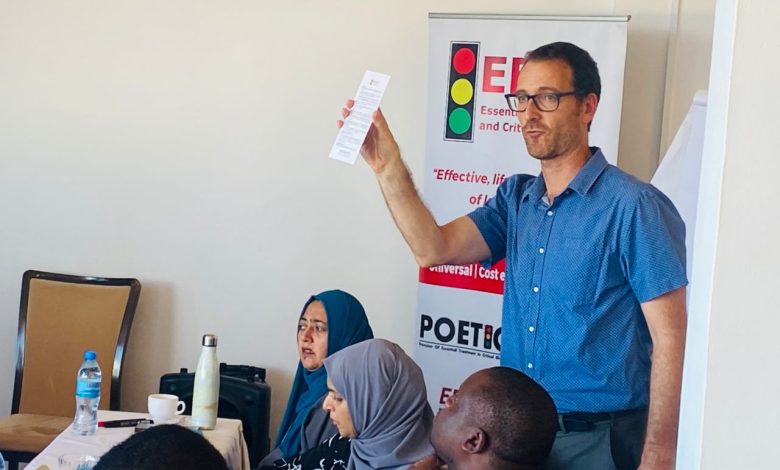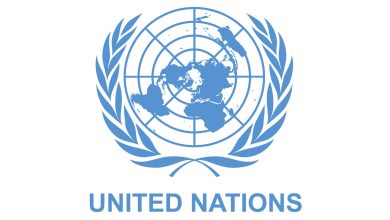How life-saving EECC implementation can transform Tanzania’s Healthcare

DAR ES SALAAM: AS the burden of critical illness rises in Africa, Tanzania as well, health experts are calling for the urgent implementation of Essential Emergency and Critical Care (EECC), a cost effective high-impact approach proven to reduce mortality.
This is due to a new concern emerging over the ability of hospitals to provide life-saving care EECC to critically ill patients.
Study has found that most critically ill patients are treated in general wards with many missing out on basic interventions such as oxygen and intravenous (IV fluids).
Speaking in an exclusive interview with ‘Daily News’ Professor Tim Baker expressed how the implementation of EECC could transform how Tanzania’s hospital handle critically ill patients and save as many lives as possible.
Prof Baker is an Associate Professor, Critical Care Physician and Anesthesiologist at Muhimbili University of Health and Allied Sciences (MUHAS).
He is also the lead author of the recently published research titled “African Critical Illness Outcome Study (ACIOS),” which revealed that 1 in 8 inpatients in African hospitals are critically ill, with 69 per cent receiving treatment in general wards rather than ICUs.
“When we talk about EECC, it’s crucial to note its simplicity. It comprises the low-cost actions that are easy for any medical professional to implement, saving lives more effectively than many alternatives, making it a powerful procedure for impactful change,” said Prof Baker.
Amid the rising burden of critical illnesses, Prof Baker identified major contributors, including the growing prevalence of non-communicable diseases (NCDs) such as heart disease, cancer and diabetes, along with an increasing elderly population.
Defining EECC he said is the way of supporting vital body supporting organs to function well from severe form of acute illness that put a patient into imminent death risk.
“When the patient becomes critically ill some of the vital organs of their body becomes threatened so they need to be capitalised by supporting the airways and the breathing safely in and out and also the circulation system of their heart and blood,” he said
He added that, “EECC are often not being provided in hospitals across Africa so we are missing to give treatment through things like oxygen or IV fluids, we are not giving it when we should be in our hospitals.”
Prof Baker advised that medical professionals should be checking regularly patient’s vital signs to have record and trend of their heart rate, blood pressure, breathing rate and conscious level through a set of observation, as easy and effective way to save their lives.
Despite these cost-effective, high-impact and life-saving procedures being somewhat neglected across Africa, Prof Baker said there is a glimmer of hope in Tanzania, where the government has already developed a national strategic plan for EECC.
He said, the government is currently operationalising this plan with the support of the United Nations International Children’s Emergency Fund (UNICEF) in collaboration with MUHAS.
Training healthcare workers has just begun, primarily in six regions including, Dar es Salaam, Kigoma, Katavi, Songwe, Mtwara and Zanzibar.
On her part, a Lecturer, Researcher and consultant in Anesthesia and Critical Care at MUHAS Dr Karima Khalid, underscored that the necessary resources to provide EECC are available in approximately 89 percent of hospitals in Tanzania.
ALSO READ: Tanzania’s JKCL, Muhimbili services impress Mozambique delegates
However, Dr Khalid pointed out that the issue lies in the fact that these resources for interventions are not readily available when patients need them in the wards.
For example she said, important items may be located in the pharmacy, whereas they should ideally be in a single area where patients are for emergencies.
Recounting a success story, Dr Khalid asserted that trained champions in different regions have applied EECC, saving numerous lives, particularly among critically ill expectant mothers.
She further urged leaders, policymakers and the Ministry of Health to view EECC interventions positively for swift implementation, ensuring that all hospitals across the country have centralised resources, system and that all healthcare workers are trained.
Dr Khalid’s sentiment is echoed by Dr Sabra Hussein, a Medical Doctor Registrar in the Anaesthesia and Critical Care Department at a private hospital in Dar Es Salaam.
She highlighted the current inadequacies in systems and setups for providing EECC, particularly when urgent care is needed.
Dr Hussein pointed out that the ambiguity surrounding EECC centralisation has led healthcare workers to deprioritise its importance compared to other medical services.
“When it comes to EECC, there is a noticeable lack of the same level of seriousness that is being applied national wide. Although some efforts being made, the absence of clear guidelines regarding on what services should follow EECC creates uncertainty for doctors about the appropriate actions they should take,” said Dr Hussein.
She underlined the discrepancy in the prioritisation of EECC services compared to other services, like maternity and neonatal care, suggesting that increased seriousness in this crosscutting field could enhance commitment among healthcare professionals.
“If there were more investment and focus on EECC, perhaps healthcare workers would be more dedicated,” she said.
Furthermore, Dr Hussein, who is also a researcher at MUHAS, advocates for equal prioritisation of EECC, asserting that every life matters and it is the duty of healthcare workers to save lives effectively.
According to groundbreaking AICOS research conducted in about 22 countries in Africa, including Tanzania, the mortality rate for critically ill patients stood at 21 per cent, compared to 2.7 percent for non-critically admitted patients within seven days.
The study also highlighted the high prevalence of critical illness, indicating that about 12.5 percent of adult inpatients in hospitals are critically ill, which translates to about 1 in every 8 inpatients.





